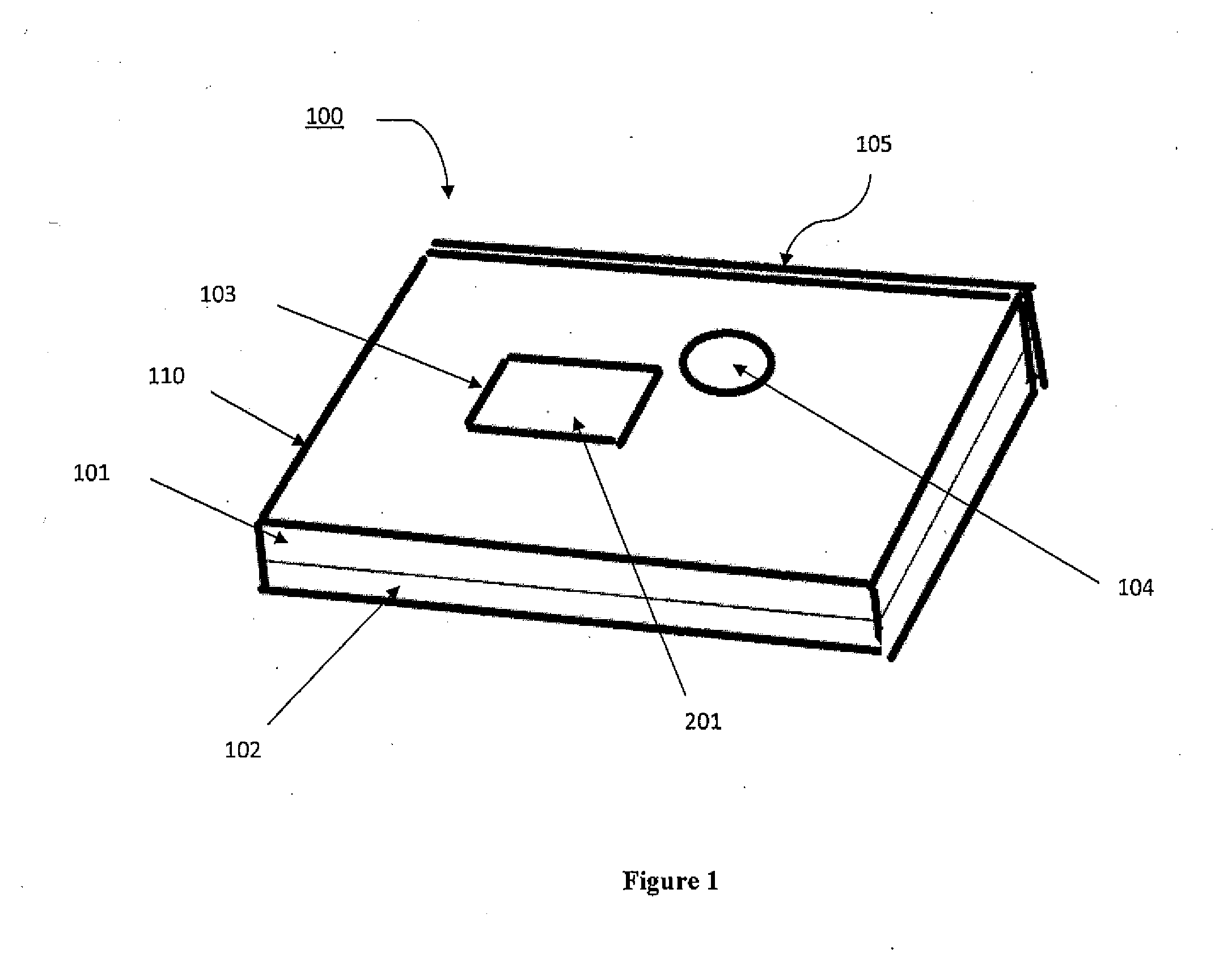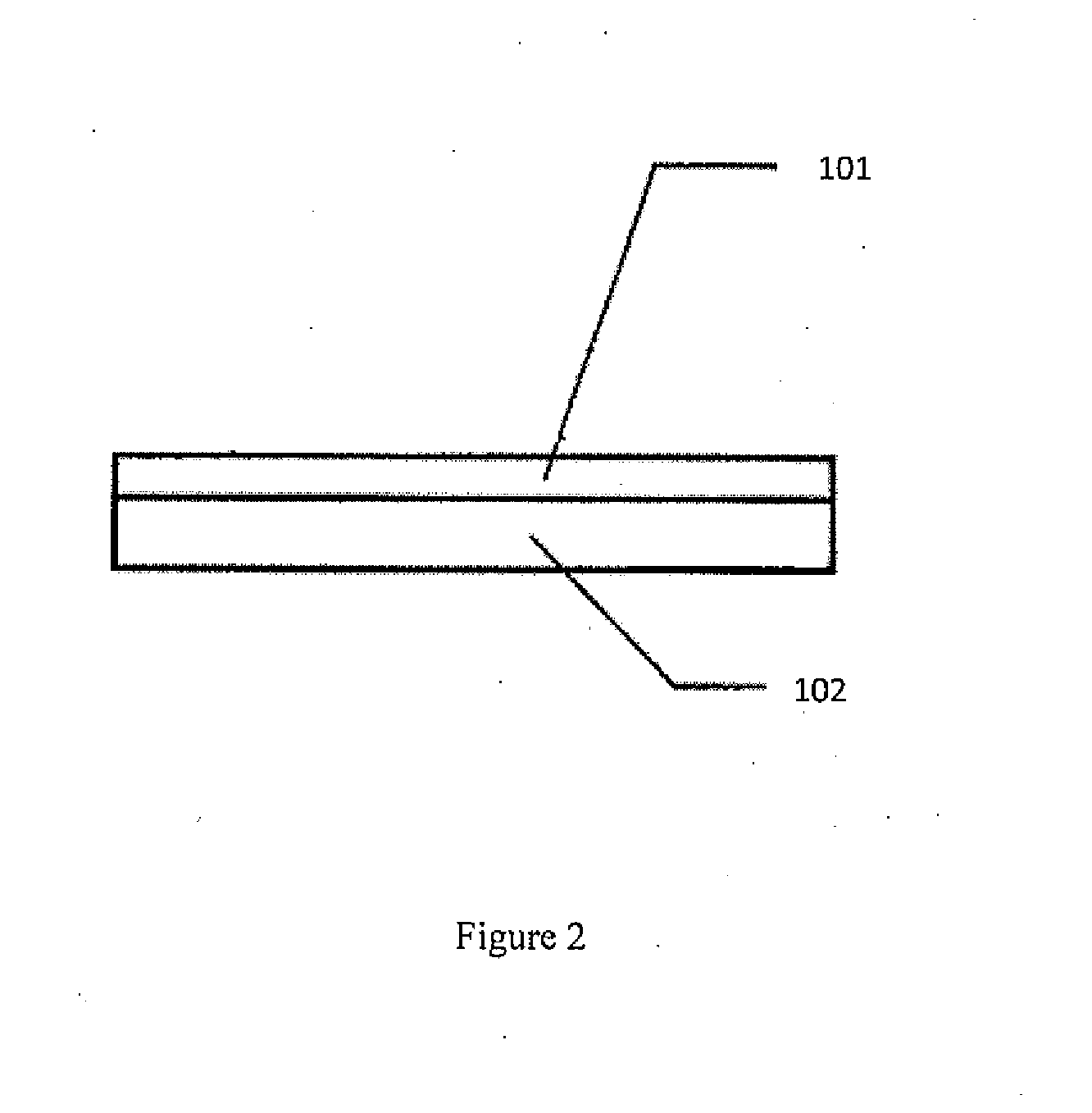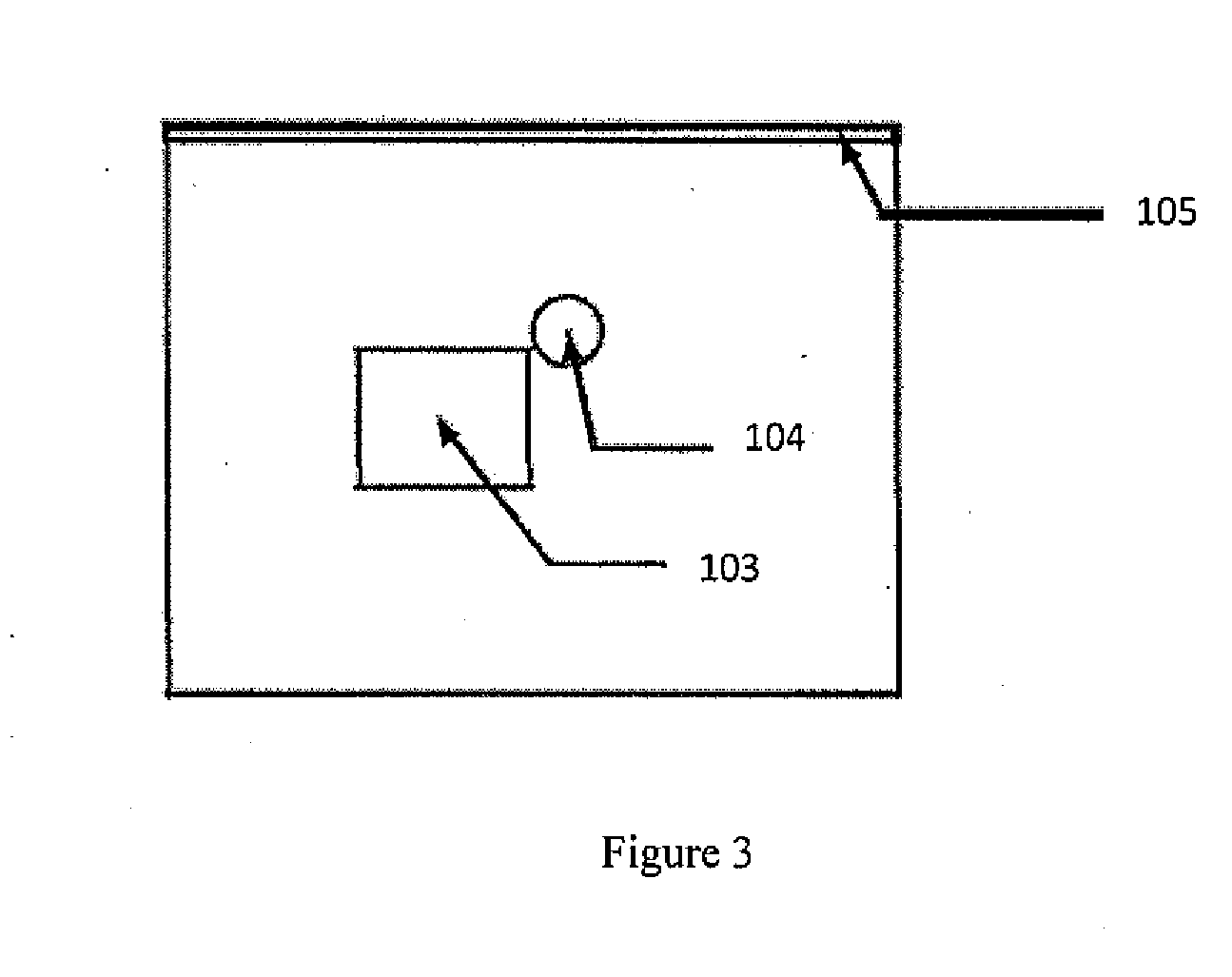Device and Method for Ambient Storage of Fresh/Frozen Tissue Sections Via Desiccation
a tissue section and desiccation device technology, applied in the field of biological sample storage and preservation, can solve the problems of less than optimal recovery in some instances, less compatible with current molecular techniques, and cumbersome and costly cryogenic storage of tissue samples
- Summary
- Abstract
- Description
- Claims
- Application Information
AI Technical Summary
Benefits of technology
Problems solved by technology
Method used
Image
Examples
example
[0064]In a preferred embodiment, a storage device of the invention would consist of three plastic molded parts, fabricated by injection or, CNC (computer numerical controlled machine tool), which provides a lower overhead / cost to market than injection molding (see FIGS. 1-5):
[0065]The bottom half (˜235 mm long, 120 mm wide, and 21 mm high with a wall thickness of ˜4 mm, of which a 1 mm centered-groove [1 mm×1 mm] would inscribe the top rim to hold a silicone rubber o-ring) that would hold the microscope slide vertical along its shortest side in three rows—each row would be approximately 6 mm in length. Each column of rows would hold approximately 45 slides for a total capacity of 135 slides. The floor of the container would contain a soft material (e.g., cork or silastic) to prevent damage.
[0066]The top half would have the same dimension as described above with an opening in the middle of the approximately 75 mm by 50 mm. Both the top and bottom half would be formed with a conventio...
PUM
| Property | Measurement | Unit |
|---|---|---|
| cryogenic temperatures | aaaaa | aaaaa |
| temperature | aaaaa | aaaaa |
| temperature | aaaaa | aaaaa |
Abstract
Description
Claims
Application Information
 Login to View More
Login to View More - R&D
- Intellectual Property
- Life Sciences
- Materials
- Tech Scout
- Unparalleled Data Quality
- Higher Quality Content
- 60% Fewer Hallucinations
Browse by: Latest US Patents, China's latest patents, Technical Efficacy Thesaurus, Application Domain, Technology Topic, Popular Technical Reports.
© 2025 PatSnap. All rights reserved.Legal|Privacy policy|Modern Slavery Act Transparency Statement|Sitemap|About US| Contact US: help@patsnap.com



